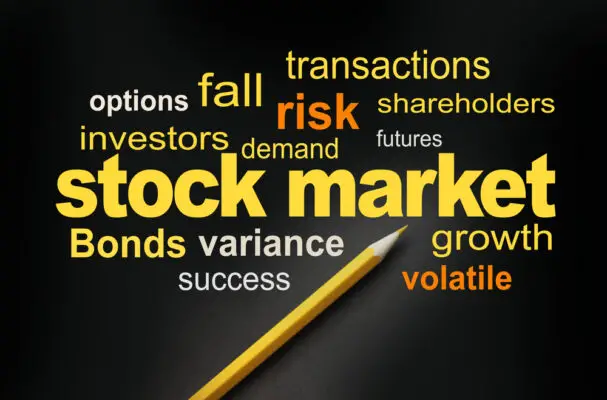Key Risk Indicators (KRIs) in insurance fraud are warning signs that fraudulent activity might occur. They can help identify and prevent insurance fraud.
Here are some possible key risk indicators for insurance fraud:
Claim Frequency: An unusually high number of claims from a single policyholder or group can signify fraud.
Claim Patterns: If similar types of claims are coming in at a high frequency, it can indicate fraud.
Discrepancies in Documentation: If the documents provided don’t line up or there are inconsistencies between the claim and the supporting documents, this may be a sign of fraud.
Previous Fraud: If a claimant or policyholder has a history of fraud or questionable claims, this increases the risk of fraud.
Inconsistencies in Statements: If the claimant’s statements and the facts of the claim don’t match up or the story changes, this can indicate fraud.
Recent Policy Change: Policies upgraded or expanded shortly before a claim is made could signify premeditated fraud.
Delayed Reporting: A significant delay in reporting the claim without a reasonable explanation can be suspicious.
Claim Severity: Large or maximal claims, particularly shortly after a policy has been taken out, can indicate fraud.
Geographical Red Flags: Certain regions may have higher fraud rates, or a claim may be suspicious if the policyholder has recently moved or the event occurred far from their home.
Uncooperative Claimant: If a claimant refuses to provide necessary information or documentation or to cooperate with the investigation, this could be a sign of fraud.
Relationship Between Parties: A relationship between the claimant and the service provider, such as a doctor or auto repair shop, especially if undisclosed, can be a risk indicator.
Phantom Claims: A claim where the damage or injury is difficult or impossible to verify (e.g., soft tissue injuries, mental anguish) can be a potential sign of fraud.
Alert Rate: The number of fraud alerts generated by detection systems can be a KRI, but it’s important to balance this with the quality of alerts to avoid inefficiencies (Shift Technology).
Hit Rate or Qualification Rate: This refers to the percentage of alerts that, upon review, are deemed to be potential fraud and require further investigation (Shift Technology).
Acceptance or Investigation Rate: The rate at which alerted cases are accepted for further investigation can also be a KRI, as it may indicate the effectiveness of the initial detection process (Shift Technology).
Recovery Rate: The amount of money recovered from fraudulent claims can be an indicator of the success of the recovery process.
These KRIs should be reviewed regularly and adjusted as necessary to ensure they remain relevant and effective in detecting and preventing insurance fraud.
It’s also important to have a robust data analytics system to track these indicators and provide actionable insights accurately.
Insurance companies constantly evaluate risk and implement strategies to mitigate potential threats. Insurance fraud remains a significant challenge for the industry, with potentially dire consequences for our financial health and reputation.
However, by utilizing Key Risk Indicators (KRIs), we can identify and address potential risks before they materialize, allowing us to make informed decisions and prioritize organizational objectives.
This article will explore the importance of KRIs in mitigating insurance fraud risks. We will examine the various types of indicators available, as well as best practices for designing effective KRIs. Additionally, we will discuss external and internal sources of information that can be used to develop these metrics.
Kris Definition and Importance
Insurance fraud is a serious problem that can lead to financial losses, reputational damage, and legal consequences. Therefore, identifying key risk indicators for insurance fraud is critical in preventing or detecting fraudulent activities.
Key Risk Indicators for insurance fraud may include metrics such as the frequency and severity of claims, the ratio of claims paid versus denied, the length of time between claim submission and payment, and suspicious behavior patterns among claimants.
These indicators can help insurers identify potential fraud cases early on and take appropriate action.
Insurers can Regularly monitor these metrics and assess their effectiveness in detecting and preventing fraudulent activities.
The importance of Key Risk Indicators in insurance fraud goes beyond just financial considerations.
It also helps maintain customer trust by ensuring fair treatment for all claimants while protecting against those who seek to take advantage of the system.
Additionally, using Key Risk Indicators can help improve overall organizational risk management practices by identifying areas where additional controls or processes may be necessary.
Overall, the effective use of KRIs is vital in combating insurance fraud and promoting integrity within the industry.
Types of Indicators
Key Risk Indicators, KPIs, and KCIs are essential for predicting future impacts and measuring historical data to improve organizational performance.
Key Risk Indicators focus on the likelihood of potential harm to a company, while KPIs measure past performance. KRIs are control indicators that help ensure specific processes or controls function correctly.
When using KRIs, it’s important to choose indicators that are measurable, quantifiable, and accurate.
These indicators should be easily understood and applicable to specific risks or deficient controls. It’s necessary to identify past or current risks and their triggers to design effective Key Risk Indicators.
Using a combination of KRIs, KPIs, and KCIs can provide an organization with a more holistic approach to risk management.
While KPIs measure historical data and can help identify areas where improvements need to be made, Key Risk Indicators can anticipate new risk factors before they occur. Key risk indicators help ensure that internal controls are functioning correctly.
Designing KRIs
Designing effective indicators requires careful selection, trigger determination, and monitoring to ensure they’re measurable, quantifiable, and applicable to specific risks or controls.
Choosing the right KRIs carefully is important to avoid data collection and analysis difficulties. One way to do this is by identifying past or current risks and their triggers.
When designing KRIs, it’s important to consider both external and internal sources of information. External sources may include customer and industry financial reports and economic indicators, while internal sources may include price trends, labor issues, and company capacity.
However, significant sources of information for KRIs usually come from external sources.
Designing effective Key Risk Indicators requires a strategic approach that involves selecting the right indicators based on careful consideration of external and internal factors.
By doing so, companies can better monitor potential threats, make timely decisions about risk mitigation strategies, prioritize organizational objectives, and effectively allocate resources toward risk management efforts.

Sources of Information
When searching for sources of information to develop effective risk indicators, it’s important to consider both external and internal factors.
External sources can provide valuable insights into industry trends and economic indicators that could impact the organization. These include customer and industry financial reports and market analysis from reputable sources.
Internal sources are equally important in developing Key Risk Indicators. Looking at price trends, labor issues, and company capacity can help identify potential organizational risks that may not be immediately apparent from external data.
It’s important to note that while external sources may provide a broader perspective, significant sources of information for KRIs usually come from internal data.
Using a combination of internal and external sources can help create a more comprehensive understanding of potential risks faced by the organization.
When designing Key Risk Indicators, it’s crucial to ensure they are measurable, quantifiable, accurate, easy to understand, and applicable to specific risks or deficient controls.
SEON Solution and Relevant KPIs
SEON offers a comprehensive solution for businesses to control fraudulent transactions and enhance their fraud detection methodologies, ultimately leading to revenue growth.
With its data enrichment, browser and device fingerprinting, and fraud detection API capabilities, SEON provides complete control over the rules affecting fraud scores. This can help companies reduce false positives that impact overall revenue in the long run.
In addition to its solution, SEON also provides relevant KPIs for online stores and e-commerce. These include original approval rates, chargeback rates, average manual review time per agent, and checkout abandonment rates.
By tracking these indicators closely, businesses can understand how well their current fraud prevention systems are working or where improvements could be made.
One particularly useful KPI is the cost of fraud – a strong risk indicator that gives a better view of how fraud affects various business areas.
Cost per analysis is another good way to calculate ROI on fraud prevention efforts. Sharing enough KRI data with the team can also help self-regulate and improve performance.
With SEON’s advanced technology and valuable KPIs, companies can take a holistic approach to insurance fraud prevention while optimizing revenue growth opportunities.
Frequently Asked Questions
What are some common types of insurance fraud that KRIs can help detect?
We can use Key Risk Indicators to detect common types of insurance fraud, such as fake injury claims, staged accidents, and premium diversion. They help us anticipate risks and improve our risk assessment framework.
How can KRIs be used to improve customer experience in the insurance industry?
We can use Key Risk Indicators to improve customer experience in the insurance industry by identifying potential issues affecting customers and taking proactive measures to address them. This can lead to increased customer satisfaction, loyalty, and retention.
Can KRIs be used to identify potential fraud within a company’s own employees?
Yes, KRIs can be used to identify potential fraud within a company’s own employees. By carefully selecting and monitoring indicators, we can detect suspicious behavior and address it before it causes harm to the organization.
What are some potential drawbacks of relying too heavily on KRIs for fraud prevention?
Relying too heavily on Key Risk Indicators for fraud prevention can lead to false positives, lost business, and a rigid system that fails to adapt to new risks. It’s important to balance KPIs and KRIs with human judgment and a holistic approach to risk management.
How can companies ensure that their KRIs are regularly updated and relevant to the changing landscape of insurance fraud?
To ensure our KRIs remain relevant to the changing landscape of insurance fraud, we regularly review and update our data sources, assess new risk factors, and adapt our strategies accordingly. This allows us to stay ahead of potential threats and mitigate risks effectively.
Conclusion
Understanding the importance and implementation of Key Risk Indicators (KRIs) in insurance fraud prevention is vital for insurers to protect their financial and reputational well-being.
KRIs offer a powerful tool for identifying potential threats before they occur, enabling timely decision-making and prioritization of organizational objectives.
Effective Key Risk Indicators must be designed with specific characteristics in mind, such as relevance, actionability, and sensitivity.
To develop effective KRIs, insurers must gather information from both internal and external sources. This includes data on historical fraud incidents, industry trends, regulatory changes, customer behavior patterns, etc.
Insurers can leverage advanced technologies like SEON Solutions and relevant KPIs to stay ahead of emerging risks while improving risk assessment frameworks. Implementing a comprehensive Key Risk Indicator program is critical for mitigating potential insurance fraud risks.
Insurers prioritizing this area will be better equipped to identify suspicious activities early on and take proactive measures to prevent losses.
Downloadable resources
For complete/comprehensive Fraud risk registers, contact chrisekai@gmail.com, Also visit our services page.

Chris Ekai is a Risk Management expert with over 10 years of experience in the field. He has a Master’s(MSc) degree in Risk Management from University of Portsmouth and is a CPA and Finance professional. He currently works as a Content Manager at Risk Publishing, writing about Enterprise Risk Management, Business Continuity Management and Project Management.



